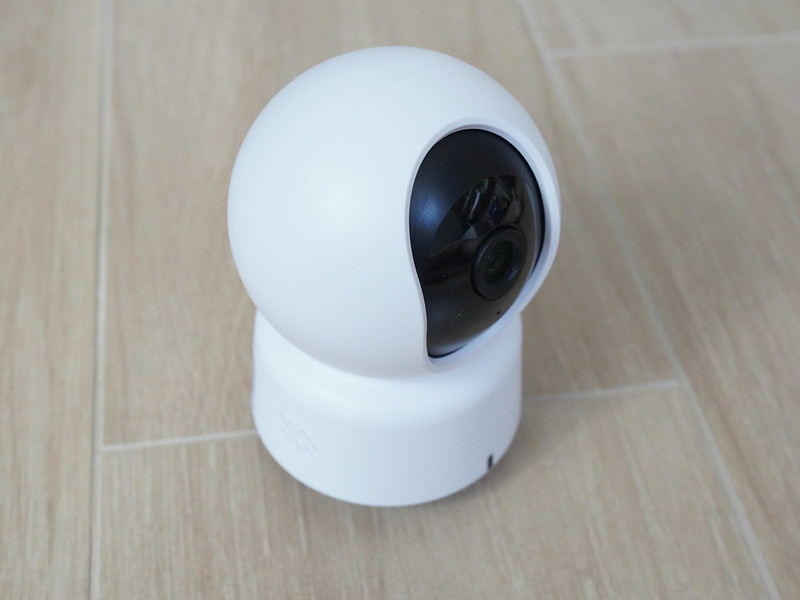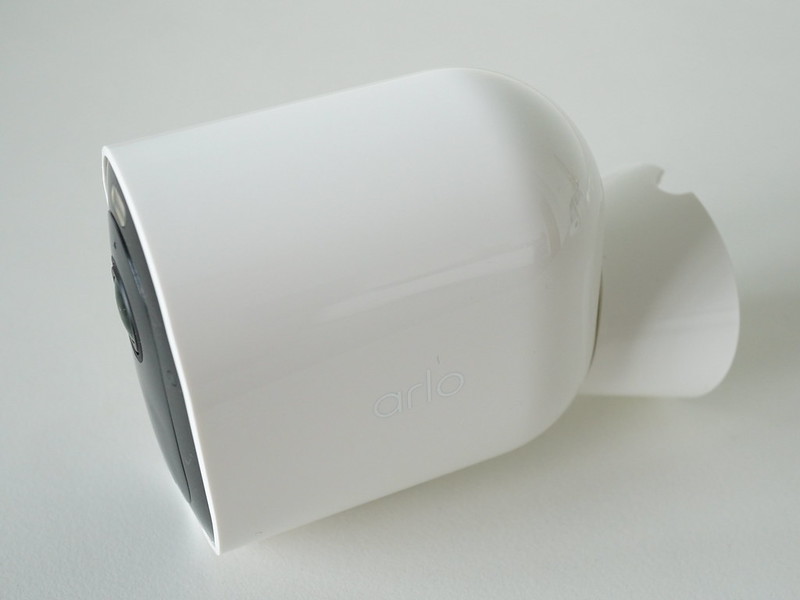Arlo Essential Indoor Camera Review
Arlo launched their Arlo Essential Indoor Camera last month and it is currently retailing for S$199. Essentially (pun intended), this camera is the indoor version of the Arlo Essential Spotlight Camera that I reviewed last October.
The major difference is Essential Indoor is wired, and Essential Spotlight is wireless. Essential Indoor doesn’t have a spotlight, and its night vision is black and white only.
Other than that, both Essential Indoor and Spotlight specifications are almost the same, with full HD (1920 x 1080) resolution, 130° field of view, 2-way audio, built-in 80dB siren.
Unboxing



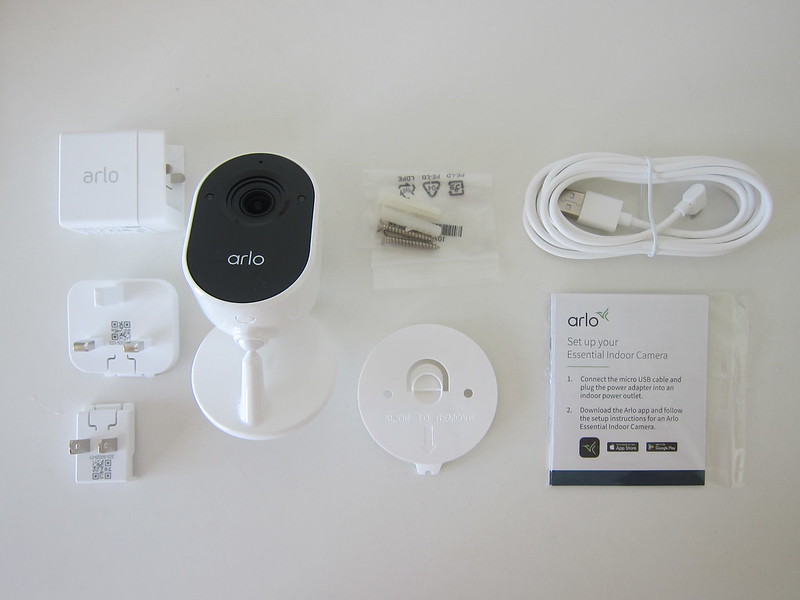
The micro USB charger is included in the packaging, and it is a 10W (5V/2A) charger. I am not sure why Arlo doesn’t want to switch to USB-C. It is 2021, and we are still using micro USB?
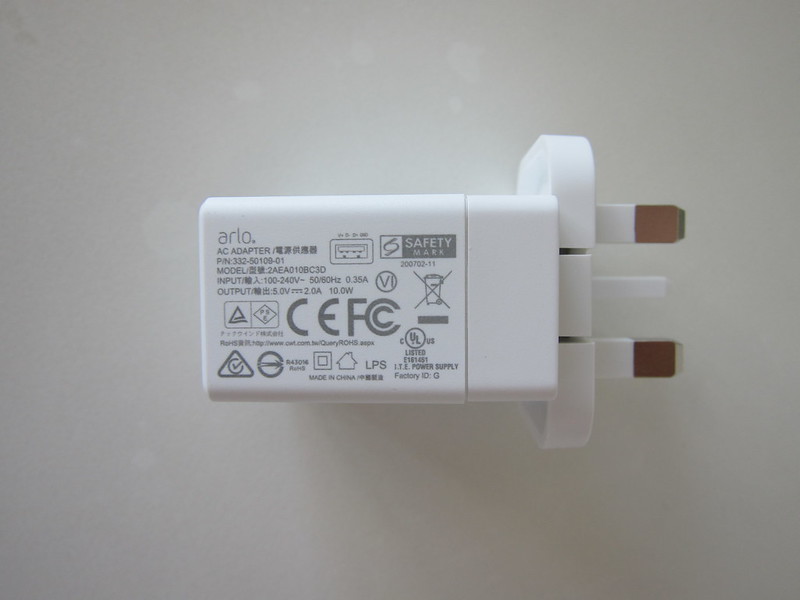
The packaging comes with a mounting plate and screws if you want to mount the camera on the wall.

Design
The design language is the same as Essential Spotlight. Glossy white finish with glossy black front. Not a fan of glossy finishes because scratches can be seen easily.
In front houses the microphone, status LED, and ambient light sensor.

At the back are the micro USB port and the speaker.

The only button on the camera is the Sync button, and that is used for pairing.
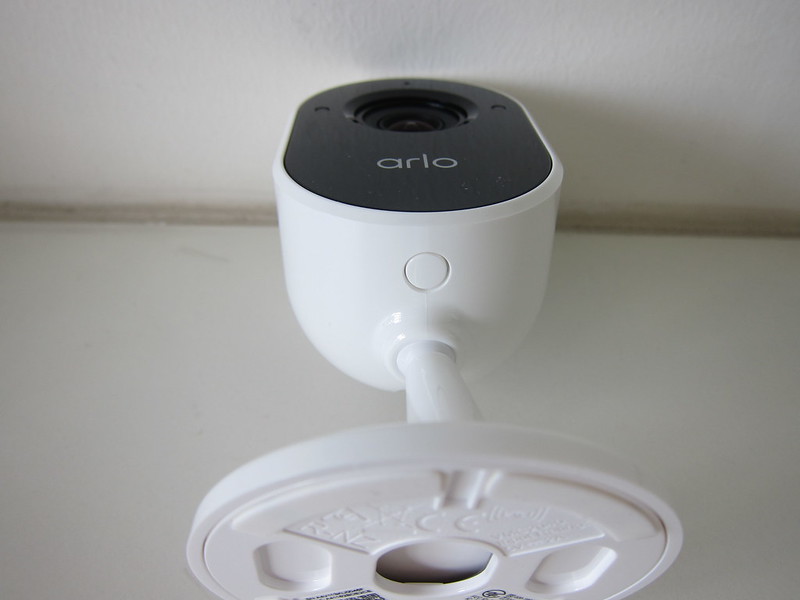
Setup
I will not be touching on the installation and Arlo Smart subscription plan here since I covered it quite extensively in my Arlo Essential Spotlight Camera Review.
The only difference is it will introduce you to the privacy shield feature during the installation process and give it a test.


Camera Quality
No complaints about the camera quality; it is similarly as good as the Essential Spotlight.

Do note that the night vision is in Black and White, unlike the Essential Spotlight, where it will be in color.

Privacy Shield
The major selling point of the Essential Indoor is the mechanical privacy shield that automatically slides up to block the camera lens when it is disarmed, and it will slide back down when it is armed.


In this way, if you are at home, you can be sure that the camera is not recording any footage due to its lens physically being blocked. This should give you peace of mind.
You can automate this by using geofencing or scheduling mode.


Base on my test, it takes about 15 seconds between you changing the mode and the opening/closing of the privacy shield. I think it can be faster.
There are no camera settings to open or close the privacy shield manually, and the only way is via the switching of the mode.
If the mode is disarmed (the privacy shield is closed), and if you want to live-stream footage from the camera, you can do it by just reauthenticating, so in this way, the privacy shield is open while the mode remains disarmed.


Also, if you are on an Arlo Smart subscription plan and have the Continuous Video Recording (CVR) add-on, the privacy shield will stay open. It kind of makes sense because what is the point of CVR if the shield is blocking the lens.
Conclusion
Despite being a wired camera, the time taken to connect to it from the Arlo app is almost as long as the wireless Essential Spotlight, about eight to ten seconds. I thought it was supposed to be faster since it is permanently powered and does not need to worry about battery life.
The privacy shield is a good feature for people who want to place a camera at home but still physically block the camera from recording when needed. Though I think Arlo should also have the opening and closing of the privacy shield in the settings.
For me, the privacy shield makes no difference because if I am prepared to have a camera at home, I want it to be recording 24/7 to trace back my steps in case I misplace my things.

